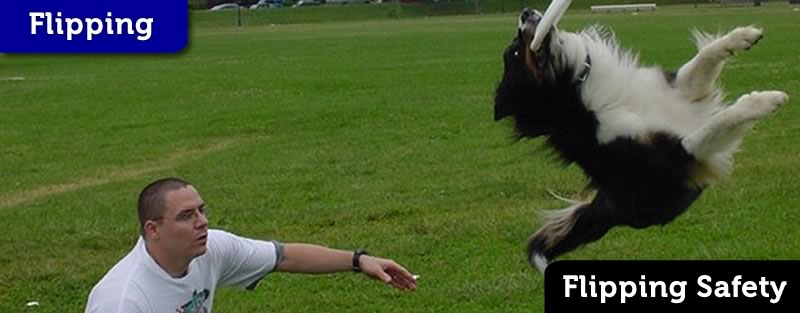
Flipping Safety
Repetition is a killer
This cannot be stressed enough.
Repetitive stress is the number one problem in all dog sports. Repeating a skill over and over is bound to cause problems.
It’s very important to limit the number of repetitions. This is extremely hard for new players as there is so much to learn, so much technique is dog specific, and flips are so darned cool. That said, try to teach flips in short spurts. I’m not going to put an exact number on what is or is not safe, but the repetitions need to be kept down to a minimum. As long as sessions run from two to four minutes, you should be alright. Remember it is the handler’s responsibility to keep the dog safe. Just because a dog will do the skill over and over doesn’t mean we have to let him.
Landing is Our Safety Cue
Because there are millions of ways that dogs can land; so many different skills: flips, vaults, overs and all of their variations; body types: big dogs, small dogs, dogs with lots of bone and a host of other variables, smooth movement out of landings is probably the best and simplest way to assess safety.
Any clunking, freezing, stalling, or other noticeable breaks in the flow of the landing process should be looked at as potentially unsafe. You want to see smooth and well balanced landings. If a dogs look to be well balanced and prepared for the next move on landing, that’s a pretty good indication that the skill was performed safely.
Front Footed Landings Are OK
Some believe that front footed landings are not safe for dogs, particularly when it comes to flipping skills. We don’t believe that here at Pawsitive Vybe. If you watch dogs leap off of objects, out of the car or out of the crate, you will always see a front footed landing.
The front footed landing allows the dog to absorb a good deal of shock by easily moving out of the landing or funneling the impact along the entire length of his body instead of taking the impact structurally on all fours.
When running and turning a dog’s body funnels this shock all the time. a dog’s body is built to take shock on the move. Shock absorption on the run happens in this order: pasterns (lower front leg), then shoulders, then chest, then the muscles of the back, then rear legs, then the back itself.
Things get dicey is when the dog experiences shock at a stand still. Landing on all fours does not allow the dog to dissipate movement via normal shock absorption. Instead of all of those parts of the body doing their part one at a time and in concert, the dog has the muscles of both legs then the skeletal structure of the back taking the full force of the impact.
It’s like a human jumping on the run. Landing on one leg allows the human to walk out of the landing, dissipating the impact with forward momentum. Landing on two feet after running means that the skeletal structure and leg muscles alone taking the beating. This is why long jumpers in track and field need a pit of sand to land in.
Handstands are Bad
We like front footed landings, but all front footed landings are not good. If a dog lands in a handstand, and it’s recognizable as a handstand to the human eye, that funneling process is not taking place as discussed above. Clunking handstand landings should be avoided at all costs because our dogs shoulders are not meant to take that kind of shock on their own.
Flailing and the Disconnected landing
Flailing is not cool. Any time the dog looks as if they’ve been thrown out of a moving vehicle it’s not aesthetically appealing and also shows that the dog is battling to maintain control over the skill. Any flailing should be treated as unsafe and efforts should be made to stop it from happening.
Be quite wary of the disconnected landing. There’s a lot of articulation and expression in many dogs flips, which is totally cool. It’s how they manage their motion and maintain balance, but if that disconnect is still noticeable during the landing, the funneling of motion is most likely not happening correctly and the body can kink causing undue pressure to one particular part of the body.



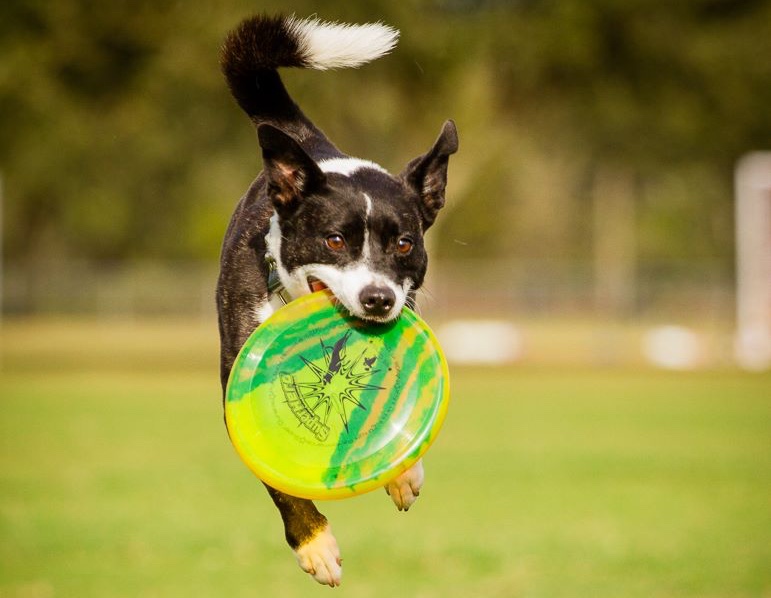
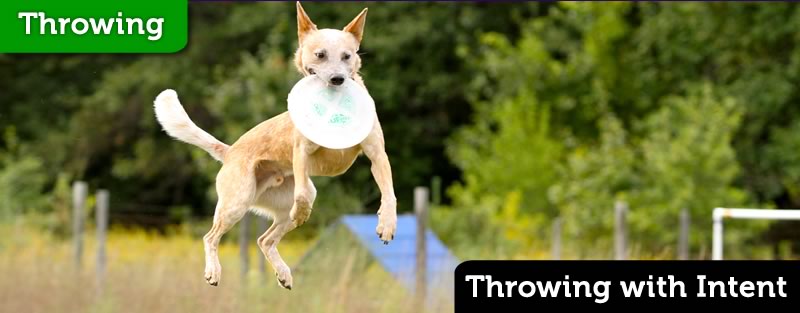
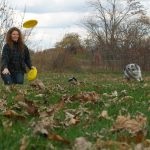

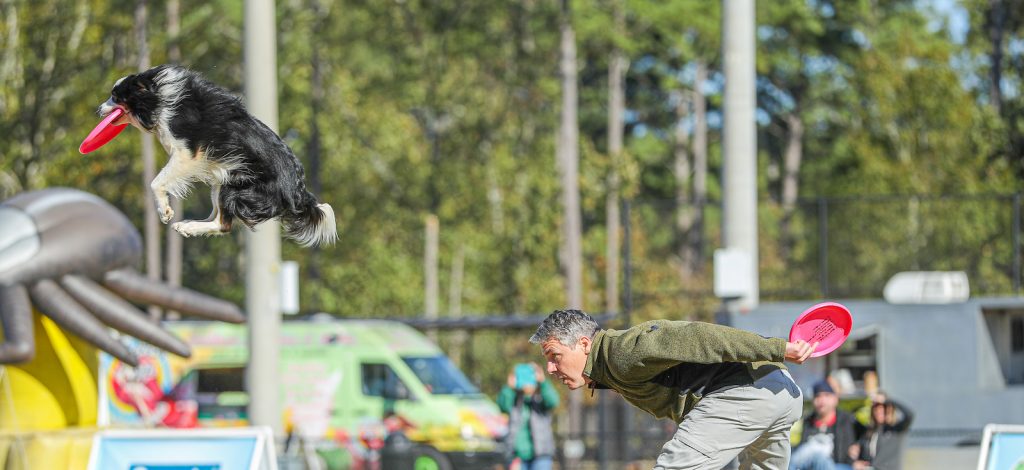
Hi Ron!
What can we do if or dog is landing wrong? I particulary don’t have problems with flips, but sometimes my dog seems fly without thinking of landing, especially in long throws.
Hmm… tough question, Marcela…
Please make sure you have read these posts:
What we need to do is to slow the dog down with consistent placement at a short distance. “Go around… perfect toss”: 6-8M away and 1-1.5M high – over and over again. This teaches the dog how to approach the target and commits the approach to the target to muscle memory. Step, step, collect… Jump!
We take that Step, step, collect… Jump! concept and set up an interception by Setting the Flank – throwing it out to the side. We teach the dog to plan, again at a short distance with perfect throws.
This kind of short throwing needs to be focused on to teach dogs how to leap properly. Once they are taught how to leap properly then they should make better decisions at the greater distances.
Does this make sense to you, Marcela?
Peace
How would you ‘train’ a dog a front footed landing? My little JRT lands all 4 or back legs 95% of the time. Jumping a jump no disc he lands front first but put a frisbee there and hes back to normal. He lands all 4/back legs from vaults, in flips, whatever.
Good Question!
Not an easy answer.
Given that your dog is a JRT, he’s probably REALLY aggressive in pursuing the disc. This kind of high drive for the disc often leads the dog to over pursue discs they are chasing. I would try to set up some Interceptions instead of chase.
On your flips, if the dog is moving out of it cleanly and looks balanced on landing, I’d not worry about it too much. Some slight adjustments might alter the trajectory of the dog, but again, if the dog is balanced and ready to rock for the next disc on landing, I’d not worry too much. Of course I’d have to see that to really give you good advice…
On the vaults, you could be putting the target too close to your body, or you might be putting it too high (I’d lean towards too close to the body…). Try placing the disc a bit further away from your body, and perhaps a bit lower.
Good luck!
Peace~